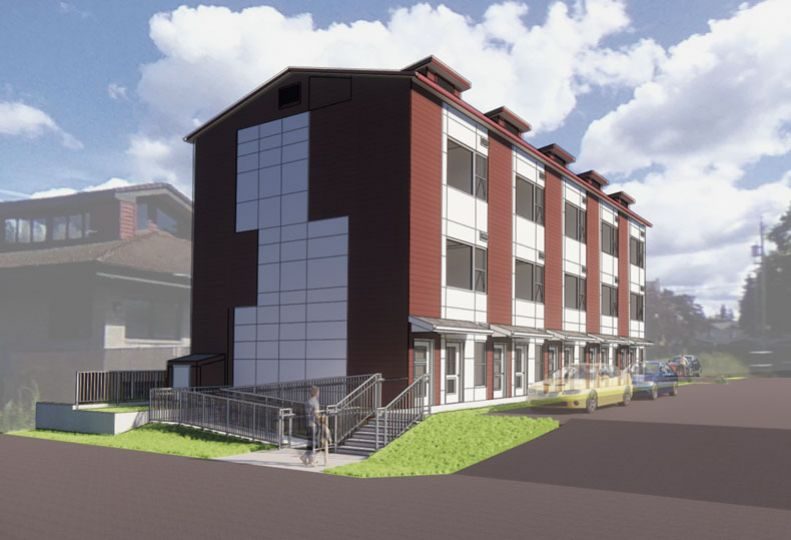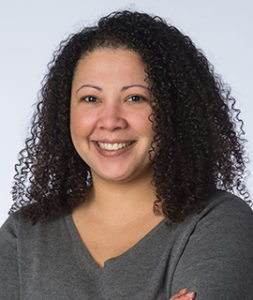
Home » West Side developer plans workforce housing in Spokane
West Side developer plans workforce housing in Spokane
South Hill, Logan-area projects set; Oldivai eyes 300 living units here in next two years

August 17, 2023
The key to bringing a three-story, 10-unit housing complex to market in Spokane by the end of the year is modular construction, says John Milne, CEO at Oldivai Capital LLC.
The Snoqualmie, Washington-based workforce housing developer recently broke ground on such a project on Aug. 1. That leaves four months to construct the $3.5 million infill project, located at 2814 E. 31st, in the Lincoln Heights neighborhood on Spokane’s South Hill. It plans to start a similar project in the Logan neighborhood, on Spokane’s North Side, later this year.
Speaking to the South Hill project, Milne says, “We’ve designed this as essentially a kit of parts. We have four modules and … we can stack and mix and match and do anything from a simple accessory dwelling unit in the back of a of a single-family home, to doing 10 units in a single complex or a single building.”
The 9,200-square-foot parcel of vacant land will have five two-story townhouse-style units atop five one-story tuck-under apartments nestled between an existing apartment building and the Regal Veterinary Clinic.
Moving forward, Oldivai Capital is seeking investors and raising funds to build 300 units in the Spokane market in the next two years, Milne says.
Oldivai already has five properties that it owns or has under contract to purchase, and the company has identified an additional 20 properties that meet its vision for development. Milne says Oldivai is open to working directly with employers who need housing options for their employees as well.
“I look at this as, housing is health,” he says. “That core social determinant of health is being able to have a home and have a place to live.”
Canadian modular building manufacturing company NRB Modular Solutions is fabricating each floor of the multifamily building at a factory in Canada, he says.
The modules will be delivered on a flatbed truck to the site where Milne says a crane will lift and stack the units together. Construction crews will follow to add exterior siding.
“The advantage of doing that is we can run parallel processing, meaning that while the crew is doing the … site prep, the factory is already building the modules. So, it compresses the timeline.”
Cobra Development LLC, of Cave Creek, Arizona, is the contractor on the project, and Seattle-based Jackson |
Main Architecture PS designed it. Axiom Engineering PLLC, of Boise, is the engineer.
The townhouse units each will have 980 square feet of interior space, including three bedrooms and 1 1/2 bathrooms. The ground-level, tuck-under apartment units each will have 490 square feet of space with one bedroom.
Each residence will have in-unit laundry and access to electric vehicle charging.
The project, along with a second townhouse-style development for which work will begin later this summer, will add density around large employers, Milne says.
“The ultimate fundamental vision for us is that employees should be able to live in the community where they’re working,” he adds.
For the second project, Oldivai is preparing to break ground on the Dakota Street development where the company is building eight three-bedroom townhouse units at 2813 N. Dakota, a couple of blocks west of Gonzaga Preparatory School.
The $1.5 million Dakota project is expected to be completed in the first quarter of next year, he says.
Before founding Oldivai, Milne was an executive in the health care industry, where he worked on similar housing plans along with Oldivai’s chief operating officer Susan Gillespie.
He says the company is named after the Olduvai Gorge, in Tanzania, where the oldest human housing development was discovered.
Milne was the senior vice president for real estate at Renton, Washington-based Providence, which has a $16 billion real estate portfolio and 54 hospitals on the West Coast, he says.
“In many of our markets for Providence, we were actually having to build housing and figure out how to provide housing for employees who we needed to work close by,” says Milne.
He contends that doctors and nurses typically earn salaries that support a number of housing choices, although there are many hospital employees who make too much money to qualify for housing assistance and yet don’t earn enough to be able to afford a down payment and qualify for a mortgage to purchase a home.
“A lot of the employees of the hospital fall in the 50% to 120% of area median income. That is the section of the workforce we refer to as the missing middle … and is often overlooked in the overall housing market,” he says.
He and Gillespie left Providence about two years ago to pursue this passion project developing workforce housing for the missing middle, he says, adding that Oldivai’s mission is to bring new housing online that’s targeted to families in an affordable way, at scale. They developed the modular design for its core product offerings.
Milne remains a practicing emergency physician at Swedish Health System, in the Seattle area, he adds.
Latest News Real Estate & Construction Cranes & Elevators
Related Articles
Related Products
Related Events




![Brad head shot[1] web](https://www.spokanejournal.com/ext/resources/2025/03/10/thumb/Brad-Head-Shot[1]_web.jpg?1741642753)
